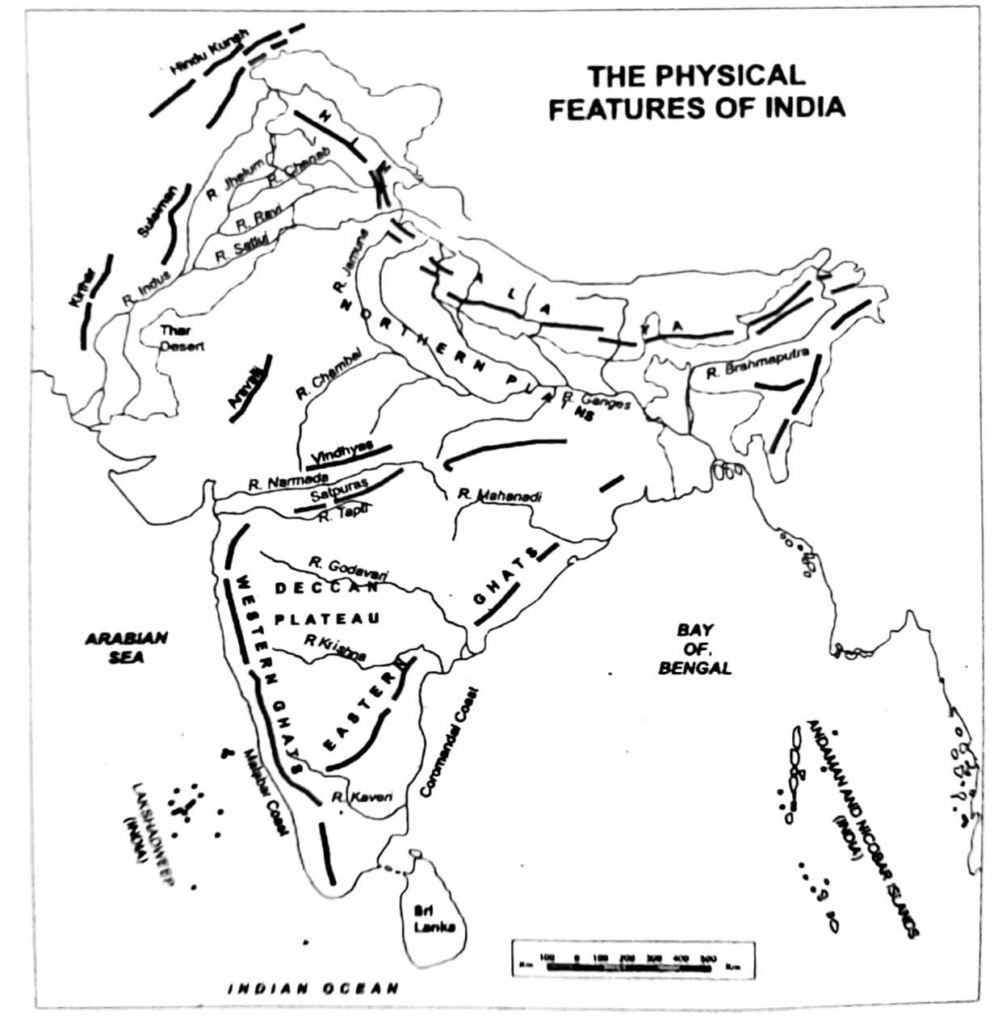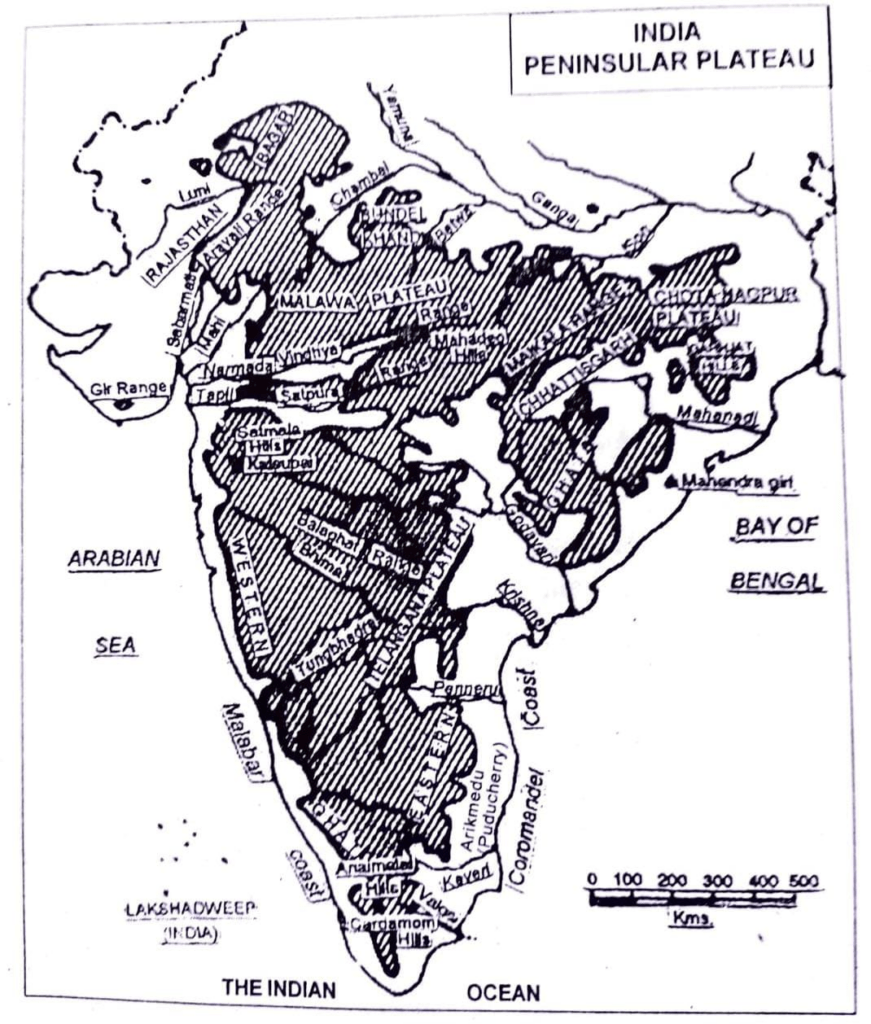NIOS Class 12 History Chapter 2 The Geographical Setting and Pre-Historic Cultures of India, Solutions to each chapter is provided in the list so that you can easily browse throughout different chapters NIOS Class 12 History Chapter 2 The Geographical Setting and Pre-Historic Cultures of India and select need one. NIOS Class 12 History Chapter 2 The Geographical Setting and Pre-Historic Cultures of India Question Answers Download PDF. NIOS Study Material of Class 12 History Notes Paper 315.
NIOS Class 12 History Chapter 2 The Geographical Setting and Pre-Historic Cultures of India
Also, you can read the NIOS book online in these sections Solutions by Expert Teachers as per National Institute of Open Schooling (NIOS) Book guidelines. These solutions are part of NIOS All Subject Solutions. Here we have given NIOS Class 12 History Chapter 2 The Geographical Setting and Pre-Historic Cultures of India, NIOS Senior Secondary Course History Solutions for All Chapter, You can practice these here.
The Geographical Setting and Pre-Historic Cultures of India
Chapter: 2
HISTORY
TEXT BOOK QUESTIONS AND THEIR ANSWERS
INTEXT QUESTIONS 2.1
Q.1. Name the important mountain passes in the north-western part of the Indian subcontinent.
Ans: (i) Gomal pass.
(ii) Bolan pass.
(iii) Khyber pass.
Q.2. Who inhabited the upper plains of the river Ganges during the later Vedic period?
Ans: Aryans.
Q.3. What were the two important religious which took birth in the middle Gangetic plains.
Ans: (i) Buddhism.
(ii) Jainism.
Q.4. In which state has tank irrigation been popular since the ancient period?
Ans: Tamil Nadu.
Q.5. The Kaveri delta is famous for which crop?
Ans: Rice.
Q.6. Name any two foreign tribes that reached India through north-western mountain passes in ancient times.
Ans: (i) Kushanas.
(ii) Hunas.
Q.7. Which region is known as the ‘breadbasket’ of the subcontinent?
Ans: Punjab and Sind in the Indus plains are known as the ‘breadbasket’ of the subcontinent.
INTEXT QUESTIONS 2.2
Q.1. Name the rivers which provided a natural defence to Pataliputra (modern Patna).
Ans: The Ganges, the Son and the Gandak.
Q.2. Which region supplied iron ore and timber to Magadha?
Ans: Chhotanagpur.
Q.3. Which type of soil is good for growing cotton? (Black/Red/Sandy).
Ans: Black soil.
Q.4. Which famous mountain pass linked the east and west coasts of India?
Ans: Palghat pass.
INTEXT QUESTIONS 2.3
Q.1. Which were the two main occupations of man in Palaeolithic Age?
Ans: Hunting and gathering were the two main occupations of man in Palaeolithic Age.
Q.2. What were the various purposes for which prehistoric man made tools?
Ans: The various purposes for which prehistoric man made tools include hunting, cutting, digging and other purposes.
Q.3. Name the main tools of the Lower Palaeolithic age.
Ans: (a) Hand axes.
(b) Cleavers.
(c) Choppers.
INTEXT QUESTIONS 2.4
Q.1. What name has been given to the tools of the Mesolithic Age?
Ans: Microliths.
Q.2. Name a few tools made during the Mesolithic period.
Ans: Triangles, lunates and trapazes.
Q.3. Name any two sites of the Mesolithic period.
Ans: (i) Bhimbetka.
(ii) Chopani Mando.
INTEXT QUESTIONS 2.5
Q.1. Who coined the term ‘Neolithic’?
Ans: John Lubbock.
Q.2. Mention the chief characteristics of Neolithic cultures.
Ans: The chief characteristics of Neolithic cultures are:
(a) Beginning of agricultural activities.
(b) Domestication of animals.
(c) Grinding and polishing of stone tools.
(d) Use of pottery.
Q.3. Name an important Neolithic site of north western region.
Ans: Mehrgarh.
INTEXT QUESTIONS 2.6
Q.1. Rock Painting or Rock Art was a distinct feature of which period?
Ans: Rock painting or Rock art was a distinct feature of Mesolithic period.
Q.2. Name the site in Madhya Pradesh which has the maximum number of rock paintings in India.
Ans: Bhimbetka.
Q.3. Point out the main subjects highlighted in prehistoric rock art.
Ans: The main subjects highlighted in prehistoric rock art are:
(i) Hunting.
(ii) Fishing.
(iii) Food gathering.
(iv) Child birth.
(v) Rearing of a Child.
(vi) Burial ceremony.
TERMINAL EXERCISE
Q.1. On a map of India, mark out the following :
(i) The Himalayan ranges.
(ii) The Eastern and the Western Ghats.
(iii) Rivers – the Ganges, the Narmada and the Kaveri.
(iv) Arikamedu (Pondicherry), Tamluk (Tamralipti) and Bharuch (Broach).
(v) Pataliputra (Patna) and Palghat.
(vi) Adamgarh, Bhimbetka and Koldihwa.
Ans:

Map 2.1 The Great Northern Mountains.
(ii)

Map 2.2 peninsular Plateau.
Q.2. Assess the influence of the geographical features of India on its history with special reference to the Himalayas and the Peninsular India.
Ans: The influence of the geographical features of India on its history with special reference to the Himalayas and the Peninsular India:
1. The Himalayas: (i) The Himalayas are the world ’s largest and the highest mountain ranges. These are approximately 2400 kilometers long.
(ii) Besides checking the invasions these ranges have also protected us from the cold winds coming from north. They also stop the monsoon winds from the seas which results in rainfall in the northern plains.
(iii) However, there are some mountain passes which though difficult, have provided access to determined invaders, traders, missionaries. These have helped in developing cultural Asia, China and Tibet in ancient times.
(iv) The Himalayan ranges are broken in the north western direction. These broken ranges contain the major routes linking the Indian plains with Iran and central Asia through Afghanistan. These pass through the Gomal, Bolan and Khyber passes.
(v) The Greeks, Shakas, Kushanas, Hunas and other foreign tribes reached India following these routes.
(vi) Buddhism and other Indian elements were carried out to Afghanistan and central Asia through these mountain passes.
2. The Peninsular: (i) It includes the Deccan plateau and the coastal plains of South India. It is situated to the south of the Vindhya mountains. It is divided into three major regions which largely correspond to the modern states of Maharashtra, Andhra Pradesh and Karnataka.
(ii) The northern Deccan plateau comprises of a part of Maharashtra. A number of Chalcolithic sites inhabited by people using copper and stone tools have been found in this region.
(iii) Karnataka includes the south – western Deccan. Due to availability of water and other resources, this region had been more suitable for human settlements than the northern part.
(iv) The Raichur doab has been known for its rice cultivation. It has been the bone of contention between different kingdoms. These regions were inhabitated right from the prehistoric times.
(v) The Western Ghats are cut by a series of passes at Junnar, Kanheri and Karle. These served as trade routes connecting the ports along the west coast. The Palghat pass at the southern end of the Western Ghats linked the west coast to the Kaveri valley and played an important role in the Indo-Roman trade in ancient period.
(vi) The people of the coastal plains region have depended more on the tank irrigation since the early times because in this region rivers are seasonal.
(vii) Kaveri delta has been the major region of human attraction because it provided opportunities for the cultivation of rice. This region witnessed the flourishing of the Sangam culture in the early historical period.
(viii) Arikamedu, Kaveripattinam and other ports gave impetus to the Indo-Roman trade in early centuries of Christian era.
Q.3. How does the environmental conditions of a region determine the resource potential? Give examples.
Ans: The environmental conditions of a region also determine the resource potential of a region. The forested region can be a rich source of timber, whereas the coastal regions yield the sea products. The hilly regions with rocks containing the mineral ores can lead to the development of metallurgy. The extraction of metals and their use for tools and other purposes may add to the standard of living. For example, Magadha was lacated in proximiti to the iron ore mines and sources of stone and timber in the region of Chhotanagpur plateau. This strengthened the position of Magadha.
Q.4. What were the chief features and uses of the tools used during the Palaeolithic period?
Ans: The chief features and uses of the tools used during the Palaeolithic period:
1. The main tools of lower Palaeolithic phase: (i) Hand axes, cleavers and choppers were the main tools of lower Palaeolithic phase. These are called chopping tools. These were rough and heavy and were made by chipping the sides of the stones. Gradually, sharper and lass heavy tools came to be made.
(ii) In handaxes, the butt end is broader and the working edge is narrow. These were used for cutting the trees or digging the roots. The cleavers had a bifaced edge. These were meant for splitting objects like the trunks of trees. The choppers were the massive core tools with a unifacial working edge and were used for chopping purpose.
2. Tools of middle and upper Palaeolithic period: (i) The flake tools or chipped pieces were the chief tools during the middle Palaeolithic period. The tools of the upper Palaeolithic period primarily consisted of burins and scrapers.
(ii) The burins were like flakes or blades. These were used for engraving on soft stones, bones or rocks. The scrapers were also made of flakes. These tools served the purpose of obtaining barks of trees and skins of animals.
Q.5. How did the climatic changes during the Mesolithic period result in the shift in the pattern of hunting?
Ans: The shift in the pattern of hunting due to climatic changes during the Mesolithic period:
(i) The Mesolithic people still subsisted on hunting and gathering but now there was a shift in the pattern of hunting from the big animals in the Palaeolithic period to the smaller animals which could be attacked with the help of bows and arrows.
(ii) Fishing and fowling were also become important.
(iii) The faunal remains of cattle, sheep, goat, buffalo, pig, rat, bison, hippo, dog, fox, lizard, tortoise and fish etc., have been found from different Mesolithic sites.
Q.6. Describe the geographical distribution of Neolithic sites.
Ans: The geographical distribution of Neolithic sites:
(i) The Neolithic sites were spread over almost all the regions of Indian subcontinent. In the northwestern region Mehrgarh in the Kachi plains of Baluchistan is a classic site.
(ii) The excavations at Mehrgarh have revealed the evidence of houses built by Neolithic period. These were built of sun-dried bricks. These houses were divided into small rooms. Crops like wheat, barley and cotton were cultivated here.
(iii) Burzahom and Gufkral were important sites in Kashmir valley. The dwelling pits, either circular or rectangular, at these sites form an important feature of Neolithic culture.
(iv) The Belan valley along the edge of Vindhyan plateau near Allahabad in Uttar Pradesh also has many Neolithic sites such as Koldihwa and Mahagara. The Neolithic tools (both stone and bone), pottery, other artefacts, floral and faunal remains have been found from these sites.
(v) Chirand in Bihar and mid-Gangetic valley region in the most popular Neolithic site.
(vi) Several Neolithic sites are present covering the hills of Assam, Meghalaya and Nagaland. The tools like Neolithic celts, small ground axes along with the remains of pottery have been found from this area.
(vi) Sanganakallu, Brahmagiri, Maski, Piklihal, Hallur in Karnataka, Utnur, Nagarjunakonda, Budihal in Andhra Pradesh and Paiyampalli in Tamil Nadu, are some of the important sites found in South India. These sites have yielded dwelling pits alongwith the evidence of cultivation of cereals and domestication of animals.

Hi! my Name is Parimal Roy. I have completed my Bachelor’s degree in Philosophy (B.A.) from Silapathar General College. Currently, I am working as an HR Manager at Dev Library. It is a website that provides study materials for students from Class 3 to 12, including SCERT and NCERT notes. It also offers resources for BA, B.Com, B.Sc, and Computer Science, along with postgraduate notes. Besides study materials, the website has novels, eBooks, health and finance articles, biographies, quotes, and more.




